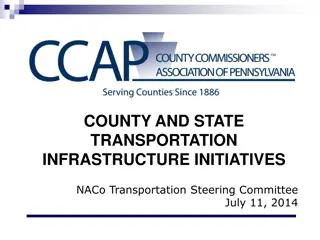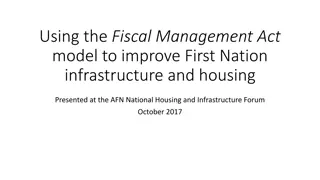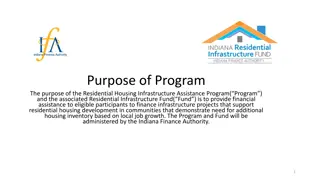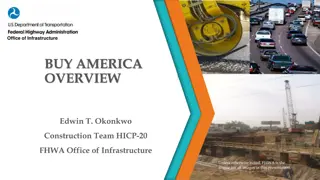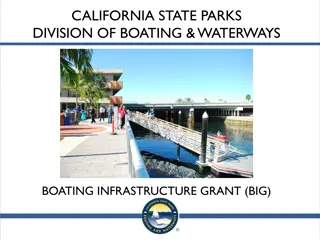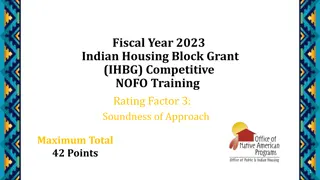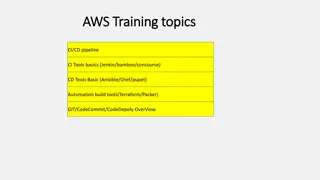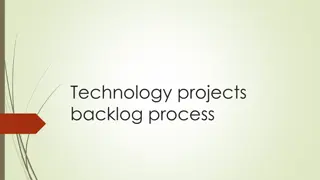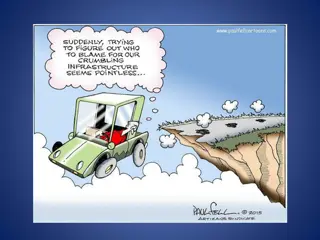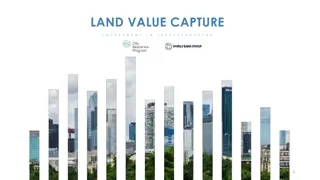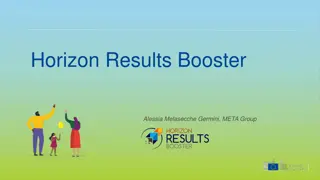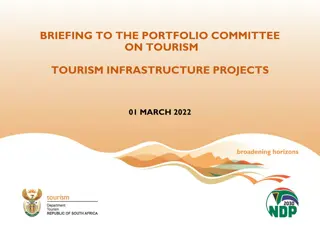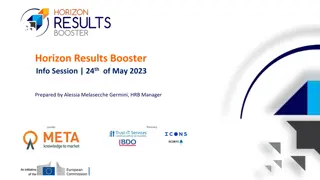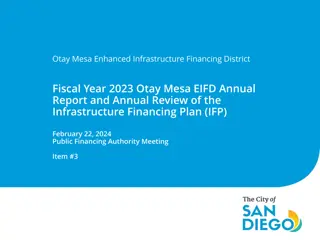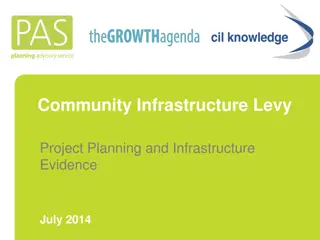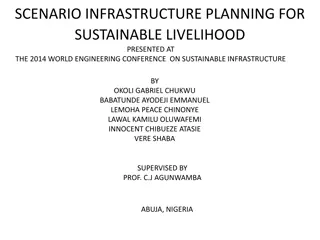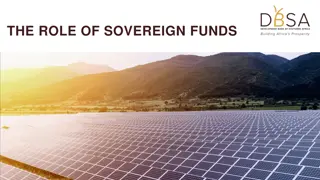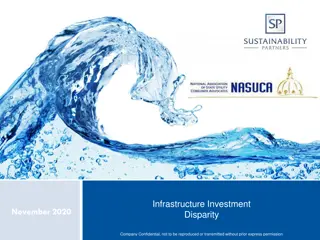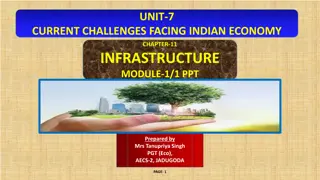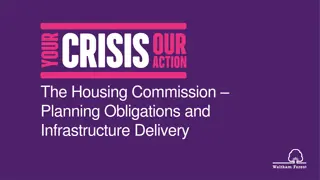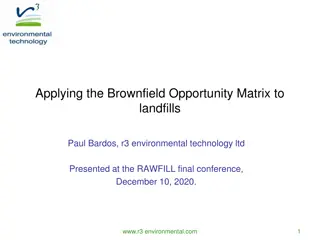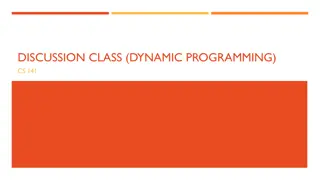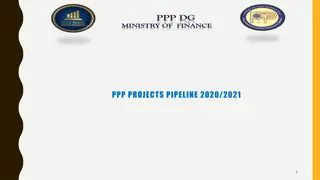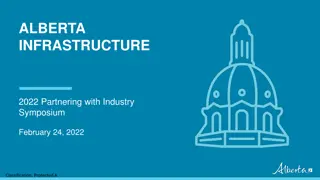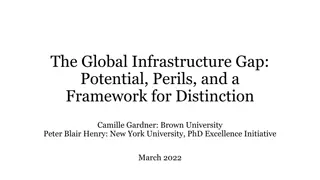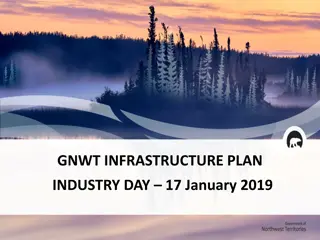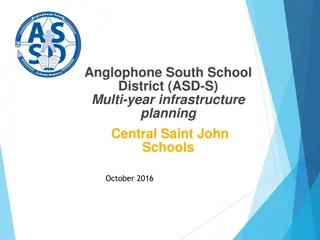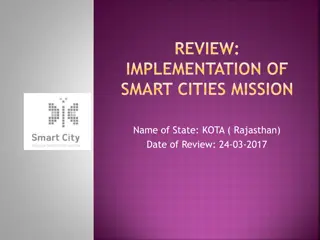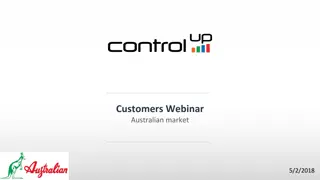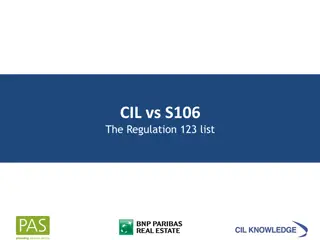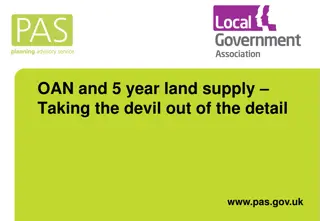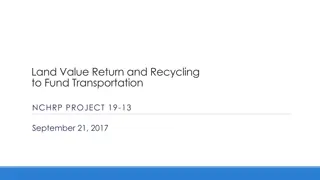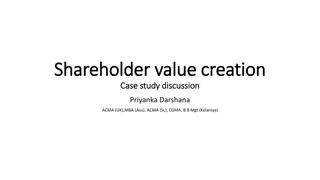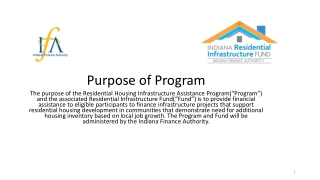Maximizing Infrastructure Projects Value with Value Planning
Value Planning, an approach for infrastructure projects, aims to enhance the value of state investments by maximizing project outcomes. It involves leveraging existing best practices like strategic planning, project management, Lean methodologies, leadership, and community development to ensure successful project execution. Key aspects of a good project include being completed on time, under budget, with minimal change orders, and sustainable financial viability.
Uploaded on Oct 06, 2024 | 0 Views
Download Presentation

Please find below an Image/Link to download the presentation.
The content on the website is provided AS IS for your information and personal use only. It may not be sold, licensed, or shared on other websites without obtaining consent from the author. Download presentation by click this link. If you encounter any issues during the download, it is possible that the publisher has removed the file from their server.
E N D
Presentation Transcript
David Dunn, PE Department of Ecology
System Improvement Team (Sync) Sync is a collaboration of: The Public Works Board Department of Health Department of Ecology Department of Commerce Sync s mission is to increase the value of the state investment in infrastructure
Value Planning is a process for developing infrastructure projects that maximizes value
Is Value Planning a new idea? Existing best practices Strategic planning Project management Lean/Kaizen Leadership Critical problem solving Community development
We want to build good projects
What is a good project? Completed on time, under budget? No change orders.
What is a good project? Completed on time, under budget? No. Few change orders. No surprises ? Startup goes well? The completed project solves a problem. The completed project is operator friendly. The completed project is financially sustainable.
A good project is the right project, successfully executed.
During project execution You cannot control: Bid climate, Change orders, Contractors, Neighbors, Other agencies, Weather, Subsurface conditions...
What Can You Control For Successful Project Execution? Good internal project team. Careful selection of engineer Well developed schedule and budget Inclusive SEPA and permitting process Complete, robust design Procuring your contractor Open lines of communication Good on site inspection Luck does not hurt
There is nothing quite so useless, as doing with great efficiency, something that should not be done at all. -- Peter Drucker
Optimization: doing things right Effectiveness: doing the right things
Value Planning: Choosing the right project The right project, At the right time, Using the right technology, Designing it to be the right size, and Embracing the right amount of complexity for the community.
Value Planning: Key Activities Listen to your community and learn from them Identify the correct problem to solve Generate alternative ways to solve that problem Objectively evaluate the options to choose the best one Planning is not a linear process.
When to do Value Planning Throughout project development. Comprehensive planning System planning CIP development Usually not as a separate exercise. Include these tools into your existing planning processes. Early in a project timeline. Don t let projects become emergencies.
Community First Unique local conditions dramatically affect Value Planning. Local political, environmental, geotechnical and hydrologic conditions. There are no one size fits all solutions. Local involvement and ownership. Local decision makers are in charge and making the decisions. Meaningful involvement of Stakeholders.
Who is a Stakeholder? Who uses your system? Who sees the project differently? Financial staff Administrators Elected officials (and Candidates) Front Line Staff Operators Who could oppose your project? Who could impact or delay your project? Neighbors Regulators Other utilities Environmental Groups Tribes Engineers
Outreach, Engagement, Invitation How you involve stakeholders matters. Are stakeholders: Informed about the project? Asked about the project? Invited into the decision making process? Asked to help frame the decision? (input on the outcome statement) The goal is not to build support, but to understand conditions so you can select the best project.
Premature HOW? Focus on defining the problem, not solving it yet. Solving the wrong problem isn t going to move you forward. Premature How is a symptom of Black/White thinking. Watch out for one size fits all solutions. 28
Value Planning requires you Ask yourself WHY? WHY? WHY? WHY? WHY? Keep asking till you identify your real problem Call it Root Cause Analysis to sound impressive 29
Questions Assumptions How do you know what you know? Growth projections Current capacity Permit Limits Future Usage What regulators like or don t like Building for growth We need a brand new something. We have to do this project NOW. Do we really know this stuff? How can you tell?
Just Asking Questions Questioning somebody else s assumptions is hard. The Expert Problem Your expert knows more than you do. Your expert knows less than they think they do. Ask your expert three questions: How do you know that? How certain are you? (quantify your thinking) What happens if you are wrong?
Identify Your Real Problem / Need Listen to your community Look for root causes, not symptoms You may have more than one problem Get Clarity: Write a problem statement: Two sentences, no more than 20 words, plain English Review with utility staff, engineers, elected officials, stakeholders Fully define your problem before you start working on a solution 32
If you want to have good ideas you must have many ideas. Many of them will be wrong, and what you have to learn is which ones to throw away. - Linus Pauling
Find more Options You can only implement the things you consider. You want to get here There is no right way to get there. You are here The way we ve always done it is only one option. Remember, not every problem is a nail; unless someone is selling you hammers.
Brainstorming 101 Your first idea isn t bad, it s just business as usual . Listen to the nobody will do that ideas. Record all the ideas. Nobody owns an idea. Take your time. Take breaks. Include different backgrounds and perspectives. Consider political and regulatory approaches. The No Action alternative. Thinking Outside The Box is really just being able to see a larger box.
Brainstorming in a small box The problem: + The alternatives: 38
Brainstorming in a bigger box The problem: + The alternatives: + 39
Brainstorming outside the box The problem: + The alternatives: 40
Screen the options Ask: Does this option solve (all or part) of the problem? Is this option infeasible? Eliminate these options.
Develop the remaining options. Capital Cost Annual Operations Cost How much of the problem is solved? Effort to implement Risk Other Benefits
Best Fit Solution Life Cycle Costs Extent of the problem solved Other Benefits Potential Risks Effort to Implement
Whole Life-Cycle Cost Construction costs (design, construction management, change order / high bid risk) AND Operations costs (labor, power, chemical, laboratory, legal, financing, and admin) AND Replacement costs (short lived assets, and end of useful life replacement) 47
The Problem with Whole Life Cycle Costs Depends on the options considered. Depends on the discount rate. Highly sensitive to how accurate the assumptions are. Estimates of construction cost Estimates of annual O&M cost Estimates of needed refurbishment (timing and cost) Estimates of the replacement cost Comparing options with different useful lifetimes. Comparing partial options. Comparing options with different levels of benefit. 48
Introductory Guide Sync has created an introductory guide for Value Planning. https://www.commerce.wa.gov/building- infrastructure/sync-systems-improvement-team/ Still a draft document Please send us your comments and suggestions: buck.lucas@commerce.wa.gov janet.cherry@doh.wa.gov david.dunn@ecy.wa.gov 50





